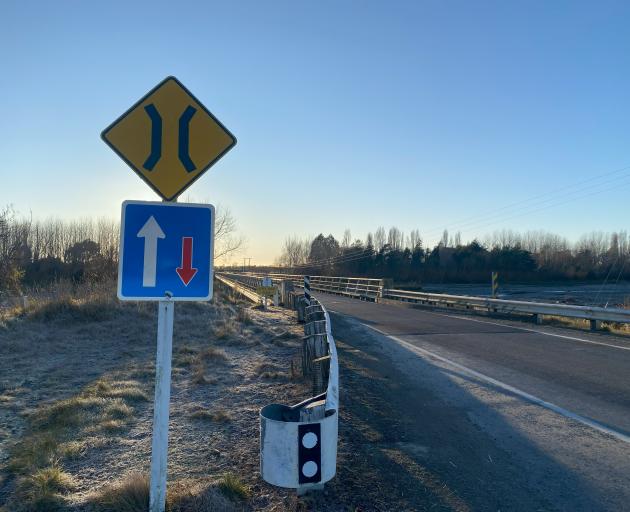
In a statement, AA South Canterbury District Council chairman Antoni Facey said at least two more years without permanent traffic lights on the single lane bridge near Geraldine was "hard to accept".
Calls began more than a decade ago for the New Zealand Transport Agency to put traffic signals on the single-lane span on State Highway 79.
Signals were envisaged as an interim solution to known traffic problems while a plan was developed for a two-lane bridge.
Since then, vehicle movements through the area have increased and despite recent appeals from the AA and Geraldine Community Board, it is understood NZTA will bid for signals in the 2027 State Highway Improvement Plan.
Mr Facey said the bridge often had queues on either side waiting to cross.
"This frequently results in dangerous and inconsiderate behaviour from frustrated motorists. SH79 is an important tourist and freight route which becomes a detour when other roads are closed by accidents or in flooding events.
"This is a matter of safety, resilience, and efficiency."
He said traffic signals on the single-lane 250m-long bridge would give definitive priority to drivers and be more efficient than leaving it up to motorists.
"Ideally this would be a two-lane bridge, but until that can be economically justified, traffic signals are our best alternative measure."
Mr Facey said it was difficult to understand how such a critical route could be allowed to remain a choke point.
Community board surveys showed overwhelming local support for proposed improvement.
The bridge was deemed "low-volume" by NZTA. About 3700 vehicles cross the Upper Orari Bridge each day.
Mr Facey said signals had been installed at other one-lane bridges in the South Island with lower traffic volumes.
"The old Beaumont Bridge on SH8 had less than 1500 vehicles crossing the Clutha River on it each day when signals were installed. Since then, it has been upgraded to a two-lane bridge and still only carries 1700 vehicles per day. More recently signals were placed at the Red Bridge on SH8A, used by about 2200 vehicles a day."
"Upper Orari’s traffic volumes well exceed these bridges, so one wonders why they were considered more important. NZTA’s priorities seem scrambled."
Mr Facey acknowledged NZTA’s plan to put temporary signals on the bridge during public holidays and other busy times was better than nothing, but this compromise was not ideal.
"Putting permanent fixed signals on the Upper Orari Bridge is the simplest solution to improving safety and efficiency at this location for SH79’s increasing number of road users."
"We will continue making the case for these signals to NZTA to ensure it doesn’t fall off the radar.
"When submissions open for the next Regional Land Transport Plan review, we would urge people to make a submission on this issue to make sure it cannot be ignored."
— Allied Media












